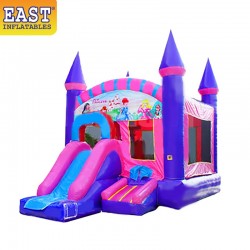
A bounce house is usually the highlight of any children’s party, but what happens if it unexpectedly collapses during the event? While such incidents are rare, it’s important to know the potential causes and how to react to ensure everyone’s safety.
1. Causes of Bounce House Collapse
Several factors can lead to a bounce house collapse mid-party. These include:
- Power Failure: If the blower loses power or the plug is accidentally pulled, the bounce house will start to deflate quickly.
- Blower Malfunction: A malfunctioning blower can stop working, causing the bounce house to lose air pressure and collapse.
- Punctures or Tears: A sudden tear in the material can cause air to escape rapidly, leading to a partial or complete collapse.
- Overloading: Exceeding the weight limit or overcrowding the bounce house can cause it to collapse under pressure.
2. Immediate Safety Concerns
If a bounce house starts collapsing during the party, the priority should be getting all the children out safely. A sudden collapse can cause panic, so it's important for adults to remain calm and guide the children out of the deflating structure. Make sure to turn off the blower immediately and deflate the bounce house to prevent any entrapment or suffocation risks.
3. How to Respond Safely
Here’s what you should do if a bounce house collapses mid-party:
- Stay calm and instruct the children to exit the bounce house quickly and in an orderly manner.
- Check to ensure no children are stuck inside or under any part of the deflated structure.
- Turn off the blower and inspect the power source to determine if it’s a simple issue like a disconnected plug.
- Inspect the bounce house for any visible damage or tears that may have caused the collapse.
- If the blower malfunctioned, switch to a backup blower if available or contact the rental company for assistance.
4. Preventing a Collapse
To prevent a bounce house from collapsing mid-party, take these precautions:
- Ensure the blower is plugged into a secure power source and periodically check it during the event.
- Follow the manufacturer’s guidelines for weight limits and capacity to avoid overloading the structure.
- Regularly inspect the bounce house for signs of wear and tear, and repair any small holes or punctures immediately.
- Secure the bounce house to the ground with stakes or sandbags to prevent it from tipping or collapsing in windy conditions.
5. Conclusion
While a bounce house collapse can be alarming, knowing the causes and how to respond can help you handle the situation safely. By taking preventive measures and staying calm in the event of a collapse, you can ensure that the children stay safe and that the party can continue without incident.




